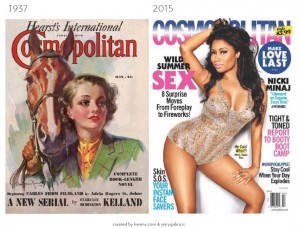Listening with Gratitude
November is the month in which we celebrate thanks. Thanks for our family, friends, and colleagues. While we each count our blessings for different things, much of what we are grateful for is the people in our lives. How do we express that gratitude? The obvious answer is by telling people, the less obvious answer is through active listening.
When people feel truly heard, they feel appreciated. We think we listen everyday, but often the person on the other side of the conversation doesn’t really feel heard. Listening seems easy, but it really difficult. Part of what makes it difficult is all the talk that goes on in our own heads and the amount of distraction our senses constantly filter.
Let’s take an example. You are sitting in a meeting and a colleague is explaining the results of a recent project. At first you are watching her intently and hear not only every word, but also notice details like how she is standing and the volume of her voice. Then a thought pops into your head, ‘I wonder who helped her on that PowerPoint.’ Pop, listening degrades. Then a fire engine siren from outside catches your attention. Pop, listening degrades. The nature of being human is to be distracted and that makes good listening difficult.
Improving listening skills, like everything in life, takes practice. This practice falls in to two categories: silent and active. The silent practice is training your mind to quiet down and avoid being pulled by sensory input. The active practice is honing your ability to put all attention on to the speaker.
Julian Treasure, sound expert, says that just 5 minutes of silence a day changes our listening. There are many ways to get silence every day. Meditation is one and there are endless types of meditation from focusing on your breath to silently repeating a mantra in your head. During meditation, your senses give you input and you return to your breath or the mantra – you are practicing focusing your mind. The more focused mind will find it easier to listen to someone with greater attention.
The active listening skill can be honed through intentional activities. One method is to keep your mind actively engaged on the speaker through noticing verbal and nonverbal elements of the person. Focus on what they are wearing, how they are standing or sitting, what they are saying through their facial expressions, and on the volume of their voice. Take mental or written notes to summarize their key points in your own language. All of this intentional activity will give you the ability to react in ways that makes the person feel heard. You will look physically engaged because you are and you will have better questions and comments because you will have assimilated the content in a more thorough manner.
Farnam Street recently had a post on Listening and the Learning Lens that well articulated an active listening technique. Because information enters the brain through our senses, the lenses we wear make a difference in how we communicate.
There are lens distorters (limits of language, differences in histories/cultures, current context, irrational expectation of rationality) that change the way we each listen, but mostly we fall into either the ‘lecture’ or ‘learning’ lens. Taking the learning lens increases your attention on the other person and makes the conversation ‘a journey of discovery not a battle of wits.’
Another listening skill builder that is apropos for this month is listening with gratitude. This is hearing with a filter of thanks and appreciation. As somebody is speaking, think of what you like about this person and how he or she contribute to your work or your life. Listen for how what they are saying right now will somehow make an improvement in something. Then you will naturally think of positive feedback to give that person to make them feel heard and appreciated.

